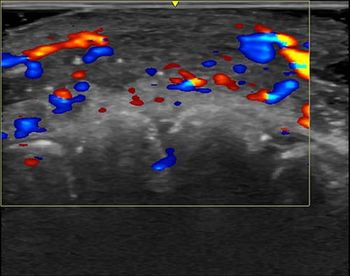
Brain MRI Findings Could Be Connected to SARS-CoV-2 in Spinal Fluid
While rare, hyperintense lesions in the brain and spine and leptomeningeal enhancements have been found in patients with the COVID-19 virus in their spinal fluid.
Certain brain MRI findings detected in patients who are COVID-19-positive are linked to an increased likelihood that they will have the SARS-CoV-2 virus in their spinal fluid.
In a study published June 9 in the
“Although hyperintense lesions in the brain/spine and leptomeningeal enhancement are associated with the presence of the SARS-CoV-2 in the cerebrospinal fluid, it is important to recognize that a positive SARS-CoV-2 PCR in the cerebrospinal fluid is uncommon,” said lead author Ariane Lewis, M.D., a neurointensivist at NYU. “These imaging findings are predominantly the result of inflammation, hypoxia, or ischemia, rather than infection, of the central nervous system.”
Individualized cases throughout the pandemic have revealed that some COVID-19-positive patients who have neurological symptoms also have these central nervous system hyperintense lesions or leptomeningeal enhancements show up on brain imaging. With a better understanding of why this happens, Lewis’s team said, providers can be better prepared to manage patients.
In particular, they said, their results could shed light on the pathophysiology of the neuroimaging findings and inform decision-making about cerebrospinal fluid testing in COVID-19 patients who present with neurological symptoms.
For their study, Lewis’s team reviewed 117 articles published in Medline and Embase between December 2019 and November 2020. They concentrated on publications that examined cerebrospinal fluid results in patients in this group who had MRI findings that revealed central nervous system hyperintense lesions that were not the result of ischemia or leptomeningeal enhancement. In these studies, lumbar puncture or PCR test were used to determine if a patient had SARS-CoV-2 in their cerebrospinal fluid.
From their evaluation, the team pinpointed 193 COVID-19-positive patients who fit this description. Of the group, 65 percent – 125 patients – had central nervous system hyperintense lesions. In addition, 10 percent of this group had a positive PCR test for the virus in their spinal fluid compared to 0 percent of patients who didn’t have such lesions.
Among the 75 patients who had contrast MRI, the team said, 27 percent – 20 patients – had leptomeningeal enhancement. They also had a higher incidence of positive PCR tests for virus in their spinal fluid – 25 percent compared with 5 percent of patients without the enhancements.
Ultimately, the team said, this link between MRI findings and the presence of the virus in cerebrospinal fluid – while uncommon – adds to the body of knowledge of how COVID-19 can impact the brain.
“Awareness of the MRI findings that can be seen in patients with evidence of SARS-CoV-2 in the cerebrospinal fluid will also be important once the pandemic is over when COVID-19 is no longer part of the differential diagnosis for every patient,” they said, “ as there is a characteristic MRI phenotype associated with many viral encephalitides.”
For more coverage based on industry expert insights and research, subscribe to the Diagnostic Imaging e-Newsletter
Newsletter
Stay at the forefront of radiology with the Diagnostic Imaging newsletter, delivering the latest news, clinical insights, and imaging advancements for today’s radiologists.




























